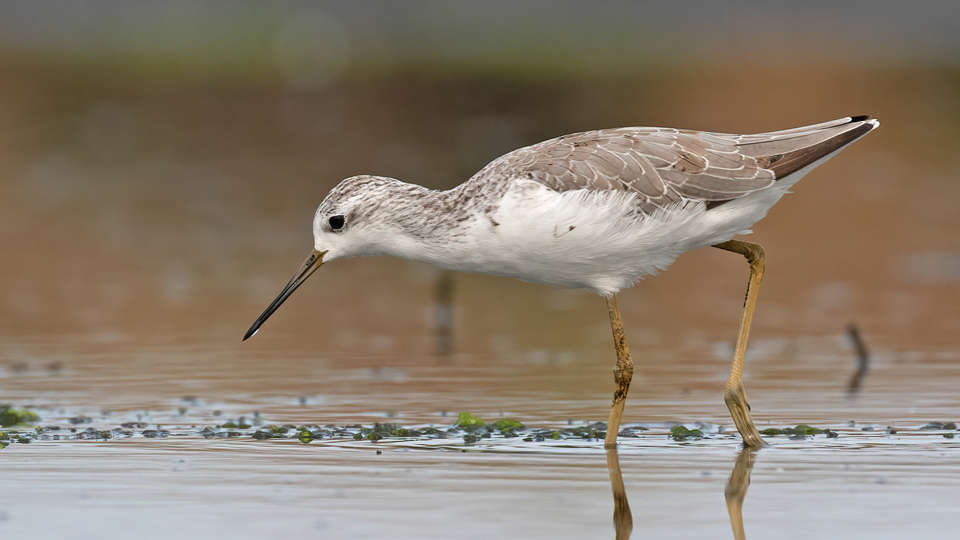Common Redshank
SCIENTIFIC NAME
Tringa totanus
MALAY NAME
Kedidi Kaki Merah Biasa
CONSERVATION STATUS
LC
Status
Common coastal migrant and non-breeding visitor.
Identification
Brown and white sandpiper with long red legs and basal half of bill. In flight, from above, white back, rump, barred tail and broad white trailing edge to inner wing. From below, underwing coverts unmarked white. Ad B: (Mar – Aug) Crown and ear coverts brown, supercilium and nape paler, streaked dark brown throughout. Lores darker brown. Entire underparts heavily streaked dark brown, with some barring on flanks and vent. Upperparts varying shades of brown, from dark brown to rusty chestnut, with darker barring, notches and shaft streaks. Differences in pattern and shade were formerly thought to indicate distinct races, but current thinking suggests that these are related to phenology and polymorphism, and the species is now considered monotypic. Legs and bill base vivid orange-red. Ad Nb: (Sep – Feb) Similar to Ad B, but streaking almost absent on underparts except for breast. Upperpart feathers plain brown with narrow whitish edges and small dark notches on tertials and larger coverts. Legs dull orange-red; bill base variably pink to dull orange. Juv: (Aug – Sep) Crown, ear coverts, nape and breast finely streaked brown; rest of underparts other than vestigial spotting on vent, white. Wing coverts and tertials brown with broad pale cream edges (which wear away quickly) and dark subterminal fringe. Median, greater coverts and tertials have prominent dark and cream notches on edge. Legs vary from dull orange to, rarely, olive green. Bill base grey-brown to pinkish, becoming redder with age.
Similar Species
Red legs of adults usually make confusion with other species unlikely. Very rare Spotted Redshank has a strong preference for freshwater wetlands, and, in Nb plumage, is grey rather than brown above, and lacks red on base of upper mandible. Some juvenile, sick or mud-stained Common Redshank may lack evident red on the legs and bill, but can be identified by brown upperparts and, in flight, broad white trailing edge to inner wing.
Typical behaviour
Foraging behaviour much as other Tringa sandpipers. Bobs head when alert and will take flight, calling loudly at the approach of potential predators. Roosts with other shorebirds, especially Common Greenshank, Marsh Sandpiper and Terek Sandpiper.
Vocalizations
One of the characteristic sounds of the mudflats; calls of birds at rest are plaintive piuuu or piu-tu. https://xeno-canto.org/786280. Among the first species to sound the alarm at the approach of perceived danger, the alarm note is a more urgent series of yelping notes. https://xeno-canto.org/151331.
Range
Occurs anywhere on the coastal plain, with a preference for muddy estuaries and intertidal mudflats.
Seasonality
Present in every month. Most frequently seen from late August to the end of May.










